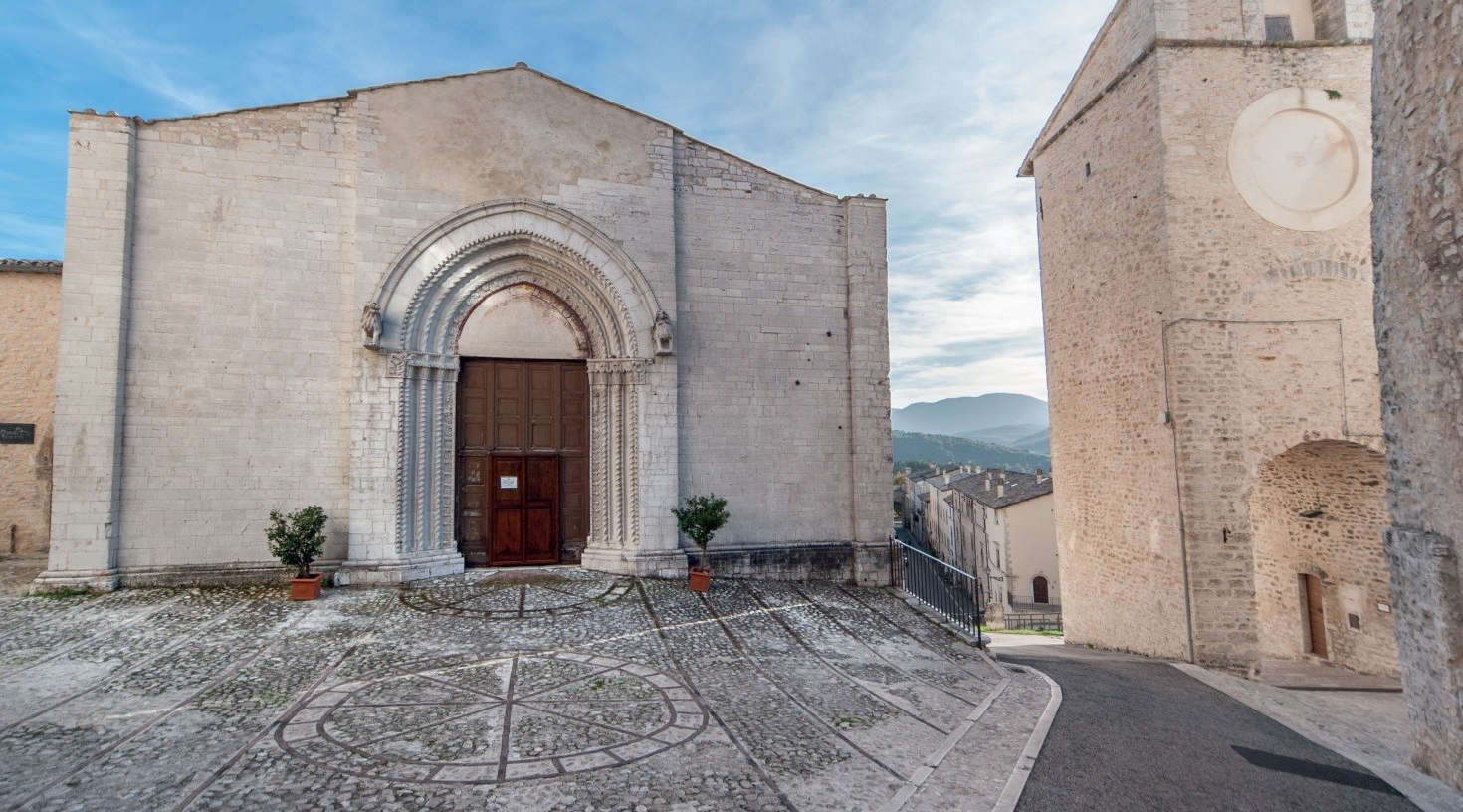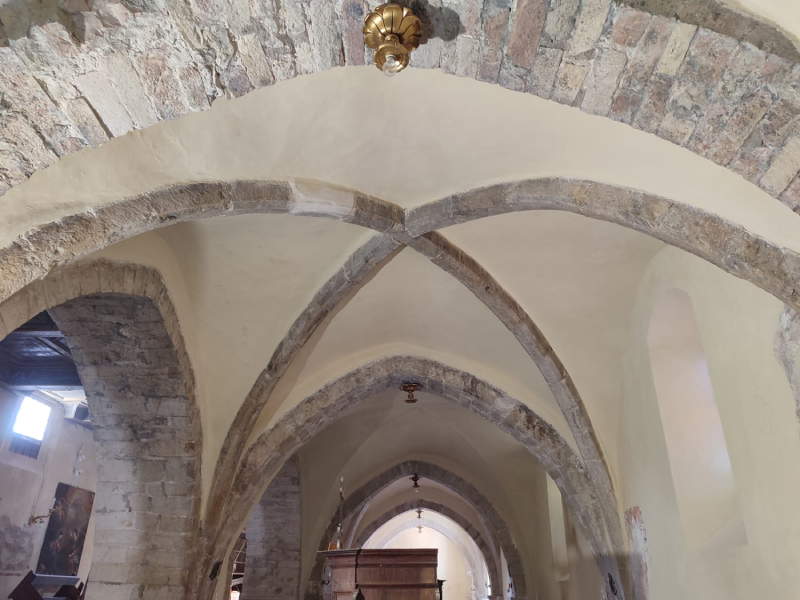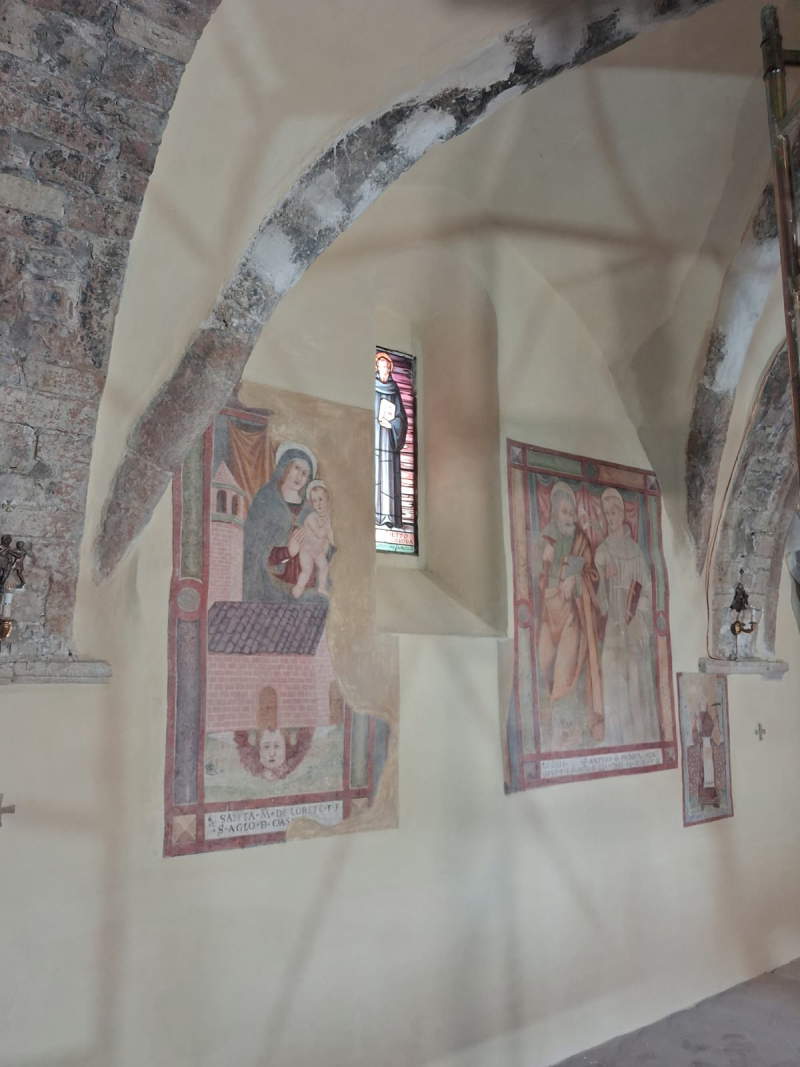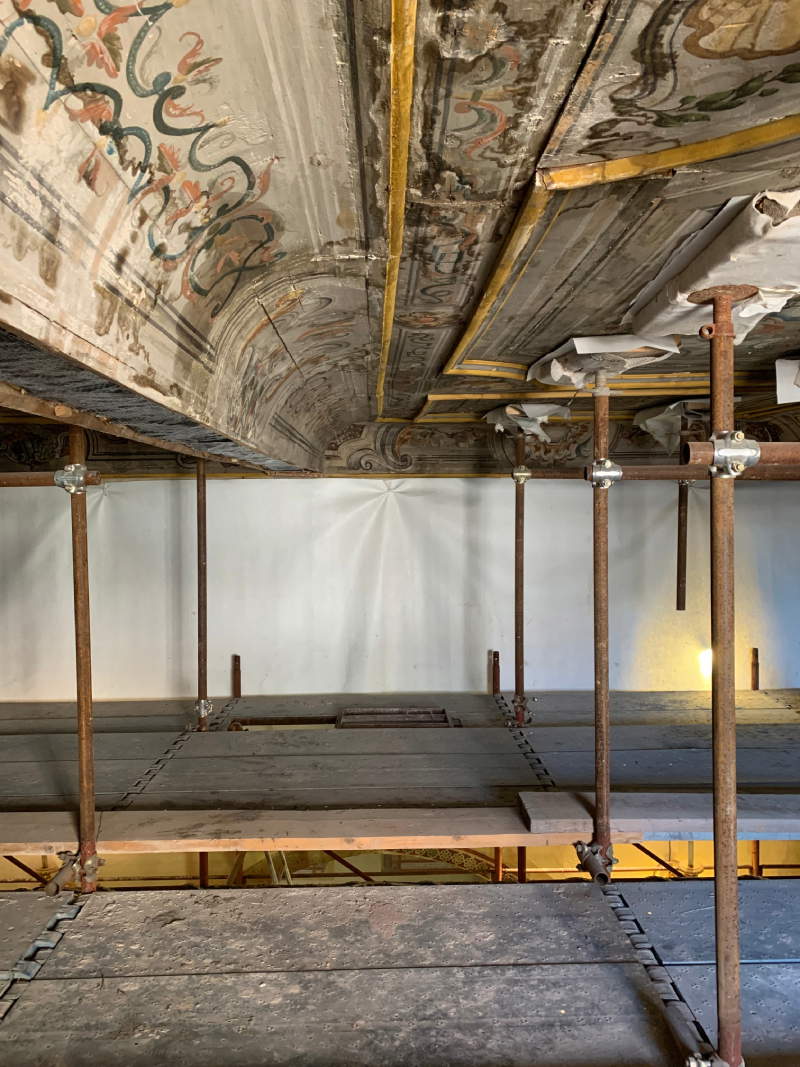In Monteleone di Spoleto, in the heart ofUmbria, the church of San Francesco is finally accessible again after years of closure due to damage caused by the 2016 earthquake and subsequent safety checks. In fact, consolidation and restoration work on the building, owned by the Fondo Edifici di Culto (FEC), which represents one of the main places of worship and historical identity of the small Apennine village, has been completed. With the completion of the intervention, the municipal condemnation order was lifted and the building was once again returned to the community, ready to reopen its doors to worshippers and visitors.
The intervention, financed through Ordinance No. 32 of 2017 of the Government’s Extraordinary Commissioner for Post-Earthquake Reconstruction, was overseen by the Office of the Special Superintendent, which acted as the implementing party. The works, totaling about 300,000 euros, were carried out by the temporary grouping of companies formed by C.E.S.A. srl and Consorzio Pragma, under the coordination of the RUP and Single Project Manager, architect Caterina Careccia. The direction of the works was entrusted to architect Francesco Boncio, a freelancer from Todi, who coordinated a design team composed of engineer Fabrizio Gentili, engineer Genny Fogliani and Dr. Luca Castrichini.


The intervention mainly involved structural consolidation and securing of the architectural and decorative elements of the church, with particular attention to the damaged wooden works and vaults. Among the most significant interventions were the restoration and reinforcement of the wooden coffered ceiling placed at the intrados of the main nave, the securing of the left altar and chancel, the consolidation of the apse vault and choir, and the repair of the lesions in the vaults of the side aisle. A complex anchoring of the side walls was also carried out, aimed at ensuring the overall stability of the structure, along with the necessary finishing works to restore the building to its original appearance.
The execution of the works was accompanied by a campaign of cognitive investigations and stratigraphic assays on the plastered surfaces, which made it possible to document the coexistence of different layers of plaster, some of older age and others of recent construction. These analyses have offered valuable information on the construction history of the church and the transformations it has undergone over the centuries, allowing interventions to be calibrated in a way that respects the original material and traditional techniques.


The completion of the works allowed for the final removal of the emergency principals installed during the emergency phase, when the church was closed for safety reasons. The revocation of the uninhabitable status by the municipality thus marks a fundamental step in the rebirth of the sacred place, which will be able to return to being not only a venue for religious services, but also a point of reference for the community and the historical and artistic heritage of the area.
The reopening of the church of St. Francis takes on special significance in view of the celebrations for the eighth centenary of the death of St. Francis of Assisi, which will occur in 2026. At the proposal of the government’s Extraordinary Commissioner for Reconstruction, the Office of the Special Superintendent has in fact requested the official inclusion of the building in the calendar of events related to the 8th Centennial, an occasion that will see Umbria at the center of a vast program of religious, cultural and artistic initiatives dedicated to the figure of the patron saint of Italy.
The church of Monteleone di Spoleto, named after the saint from Assisi, is a significant testimony to the spread of Franciscanism in the mountainous territories of southern Umbria. Its sober and harmonious architecture reflects the essential spirituality of the Order, while the interior furnishings and decorations preserve important traces of the popular devotion that animated the religious life of the town for centuries. Returning it to its community means not only giving back a place of worship to the population, but also recovering a part of the collective memory, linked to a building that has crossed the centuries and calamities intact.
 |
| Monteleone di Spoleto, St. Francis church reopens after 2016 earthquake |
Warning: the translation into English of the original Italian article was created using automatic tools. We undertake to review all articles, but we do not guarantee the total absence of inaccuracies in the translation due to the program. You can find the original by clicking on the ITA button. If you find any mistake,please contact us.